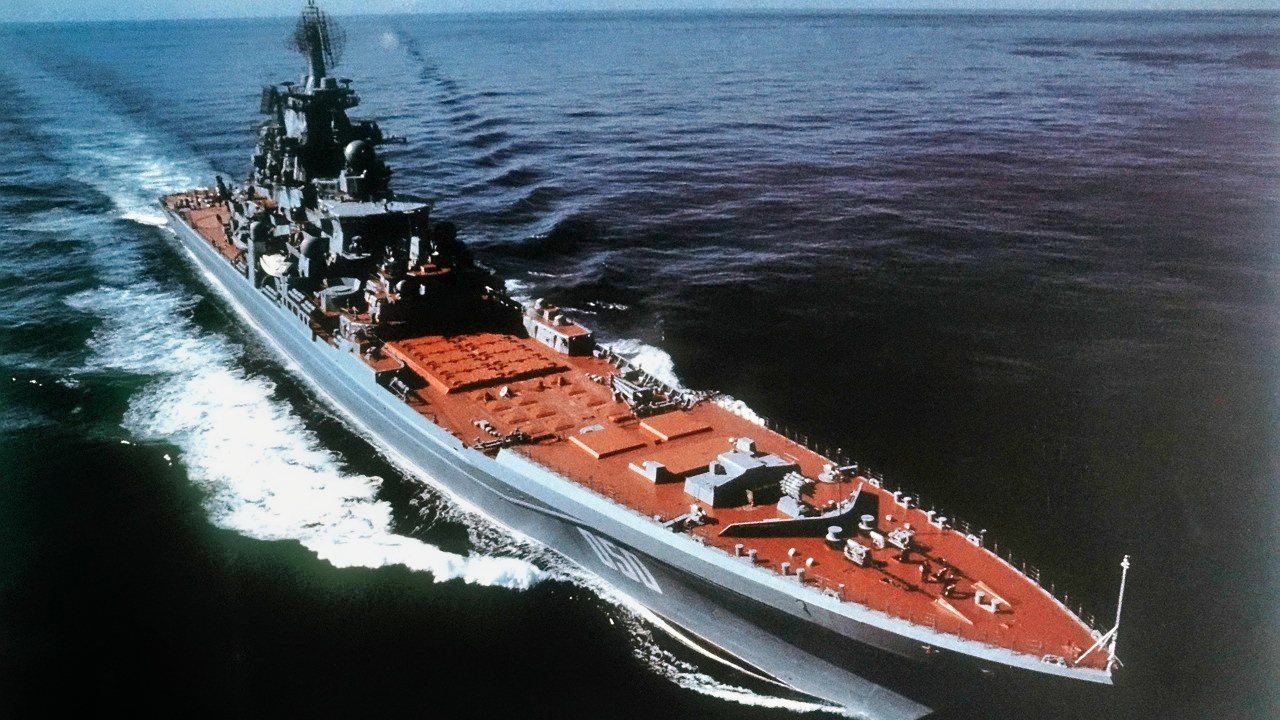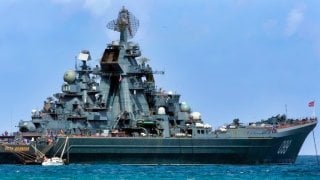Russia's Kirov-Class Battlecruiser Nightmare Is Just Getting Started
The Kirov-class battlecruisers of the Soviet Navy, initially designed to counter U.S. submarine and surface fleets during the Cold War, have proven less effective in practice than on paper.
Summary: The Kirov-class battlecruisers of the Soviet Navy, initially designed to counter U.S. submarine and surface fleets during the Cold War, have proven less effective in practice than on paper. Known for their substantial armament, including the SS-N-19 Shipwreck anti-ship missiles, these vessels were among the largest warships built post-World War II. Despite their impressive specifications, operational challenges and the economic difficulties following the USSR's collapse limited their production and modernization. Currently, only one vessel, the Admiral Nakhimov, is undergoing a refit to potentially include advanced weaponry like the Zicron anti-ship missile and Avngard hypersonic glide vehicle. However, the reliability of these updates and the actual capabilities of the Russian fleet remain subjects of skepticism due to historical overstatements by Moscow.
Kirov-Class Battlecruisers: Soviet Giants More Formidable on Paper Than in Battle
While Russia’s Kirov-class battlecruisers appear quite formidable on paper, these vessels arguably perform as paper tigers.
The Soviet Union first launched its “guided-missile cruiser class in the late 1970’s. As the Cold War was heating up, both the USSR and U.S. were pumping out warships as part of an ongoing arms race.
The Soviet’s new Kirov vessels represented the largest ships - apart from aircraft carriers - to be built by any nation since the Second World War.
Based on the class’s size and weapons complement, the Kirov ships are often described as battlecruisers. The Kirov class may feature all the qualities that should make a warship formidable, but their operational effectiveness has been limited. Moscow likely only maintains its remaining Kirov ship since its naval fleet is severely lacking.
The history of the Kirov-class:
When researching the components of its future Kirov class, Soviet officials knew that the class would have to be capable of countering America’s own submarine fleet. Specifically, the USSR required that the new battleship class be capable of carrying a hefty payload of SS-N-14 anti-submarine missiles and later P-700 Granit anti-ship missiles.
Ultimately, the Granit long-range anti-ship missile system (designated by NATO as SS-N-19 Shipwreck) became the primary armament of the Kirov ships. The Shipwreck missile was developed in the 1970s to replace the USSR’s older P-70 Ametist and P-120 Malakhit missiles- which possessed short ranges.
As the U.S. Navy built up its carrier battle groups, procuring a more capable missile system was essential to the USSR. Manufacturers Chelomei/NPO Mashinostroyenia created
The Kirov class was named to honor the first of a series of four ships constructed during the Cold War. Although the Soviet Navy planned to build at least five of these battlecruisers, the collapse of the USSR stymied this goal. Kirov- the lead ship of the class- was laid down in the mid-1970’s at Leningrad’s Baltiysky Naval Shipyard.

By 1980, she was officially commissioned and was given the nickname Baltic Combatant I (BALCOM) by NATO members. Frunze was the second ship in the class to be completed, followed by Kalinin (now Admiral Nakhimov) and Yuriy (now Pyotr Veliky).
Each of these nuclear-powered vessels were designed to sport a variety of sensors, including fire control radar, air/surfaced search radar and hull-mounted sonar.
The propulsion system incorporated on these ships was derived from a combination of nuclear power and steam turbines, which enabled the ships in theory to be able to reach a top speed of 31 knots in the water.
Kirov-Class Battlecruiser Admiral Nakhimov
While the first two Kirov-class warships have been relegated to retirement, Admiral Nakhimov was selected to undergo a modernization refit in 2006. According to Russian state-run media outlets, this battlecruiser will return to service by the end of the year.
TASS news has indicated that the ship will rejoin the fleet, armed with the Zicron anti-ship missile and Avngard hypersonic glide vehicle. The Zicron’s alleged hypersonic speed makes it invulnerable to even the more advanced Western missile defense, including the Patriot.
Russian sources claim that the weapon can travel at Mach-8.0 (times the speed of sound). If true, this would make the Zicron the fastest missile in the world. While these specs appear great on paper, Moscow has a history of exaggerating the capabilities of its weapon systems.
About the Author: Maya Carlin
Maya Carlin, National Security Writer with The National Interest, is an analyst with the Center for Security Policy and a former Anna Sobol Levy Fellow at IDC Herzliya in Israel. She has by-lines in many publications, including The National Interest, Jerusalem Post, and Times of Israel. You can follow her on Twitter: @MayaCarlin.


